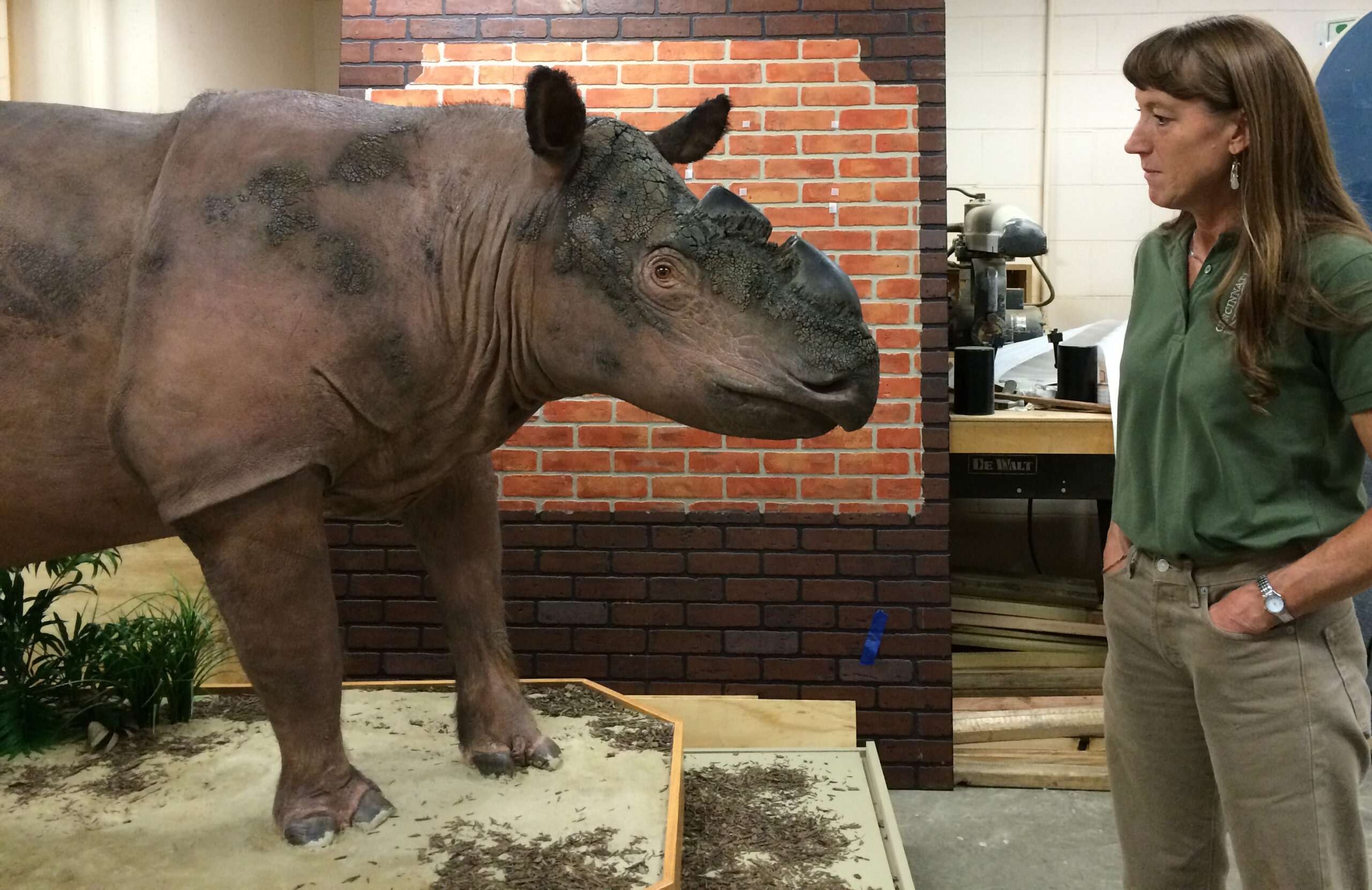DNA from Cincinnati Zoo’s “Ipuh” Provides Evidence that Trouble for Sumatran Rhinos Began 1 Million Years Ago

In addition to being responsible for the existence of about 10% of the world’s remaining Sumatran rhinos, Cincinnati Zoo’s beloved Ipuh has now helped scientists trace the start of his species’ population decline and provided basic biological information that may improve the health and well being of future generations.
An international team of researchers used a DNA sample from Ipuh, obtained after his death in 2013, to produce the first full genome sequence for the Sumatran rhino. That data, used in a study published yesterday in Current Biology, shows that the trouble for Sumatran rhinoceros populations began with climate change about a million years ago, around the middle of the Pleistocene.

Ipuh died at the age of 33 after living at the Cincinnati Zoo, where he sired three calves, for 22 years. His body was preserved by Cincinnati Museum Center (tissue samples used for sequencing were also stored here), so the public can still get a glimpse of this unique, “hairy” rhino species. Ipuh’s two sons, Andalas and Harapan, now live at the Sumatran Rhino Sanctuary (SRS) in Sumatra, and one has sired two calves.
The new insight into the Sumatran rhinos’ demographic history is useful for placing the species’ current population status, estimated to be as few as 30 individuals, into a broader ecological and evolutionary context, the researchers say. “Evolution leaves an imprint on the genome. Our genome sequence data revealed that the Pleistocene was a roller-coaster ride for Sumatran rhinoceros populations,” said Herman Mays, Jr., PhD, professor of biology at Marshall University and research associate at Cincinnati Museum Center.
“This species has been well on its way to extinction for a very long time. The fact that it is still with us today proves it is a fighter that has succeeded against the odds. ” added Terri Roth, the scientist who unlocked the secret to breeding the Sumatran rhino and Director of the Center for Conservation and Research of Endangered Wildlife (CREW) at the Cincinnati Zoo & Botanical Garden.
The Sumatran rhinoceros population peaked at a time when fossil evidence shows an invasion of continental mammals into Sundaland (a biogeographical region of Southeastern Asia), around 900,000 years ago, according to the researchers. By about 12,000 years ago—the end of the Pleistocenemany large mammals had suffered, and Sumatran rhinos were no exception.
Rising sea levels submerged the Sundaland corridor, and land bridges connecting the islands of Borneo, Java, and Sumatra to the Malay Peninsula and mainland Asia disappeared into the ocean. Most likely as a result, the researchers say, the population of rhinos shrunk as suitable habitat became increasingly fragmented. Since that time, Sumatran rhinoceros populations have only dwindled further due to increasing pressures related to habitat loss and hunting.
“Their population bottomed out and never showed signs of recovery,” Dr. Mays said.
The researchers came to these conclusions by using an approach called pairwise sequential Markovian coalescent (PSMC). PSMC makes it possible to elucidate the population history of a species from the genome sequence of a single individual, which is especially important for studying rare or extinct species. The team combined PSMC with ecological niche modeling to understand how changes in population size were related to climate change in the past.
The researchers estimate that the Sumatran rhinoceros population peaked at an estimated effective population size of approximately 57,800 individuals about 950,000 years ago. (Effective population size is the size of a population consistent with the genetic diversity in that population. It gives an estimate of the number of reproducing individuals contributing to a population.) By 9,000 years ago, the genome evidence suggests, the effective population size was reduced to only about 700 Sumatran rhinos. The findings suggest that climate change in the distant past reduced the genetic diversity of Sumatran rhinos, leaving them even more vulnerable to later pressures from human activity.
“The Sumatran rhinoceros species is hanging on by a thread,” said Dr. Roth. “We need to do more to save it. With regard to wild populations, local and national governments need to be on the same page about the importance of preserving not only the rhinos but the biodiversity of Indonesia.

Roth and her team continue to work with vets at the SRS to save the species before time runs out. She visited the facility last month to collect and freeze semen from Andalas and Harapan, the only fertile males in the managed breeding program. Remarkably, the first Sumatran rhino semen ever collected and cryopreserved was from Ipuh. CREW’s CryoBioBank contains straws of his semen that have been frozen for about 15 years. Therefore, not only will his calves and their offspring continue to provide hope for his species, but Ipuh himself may continue to sire calves even after his death.

